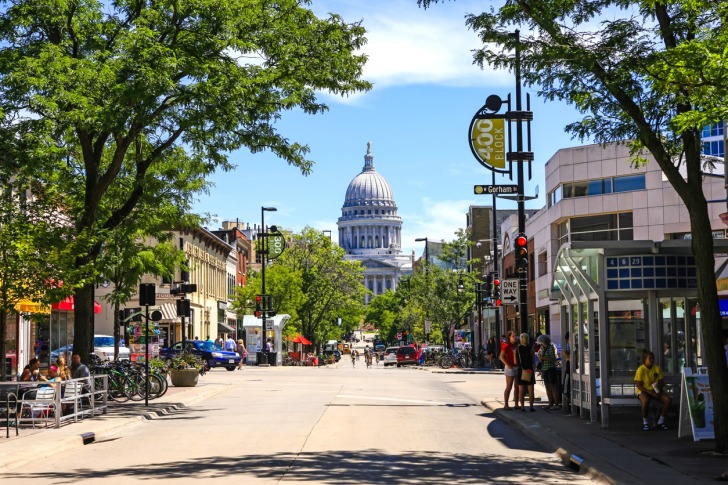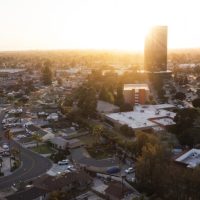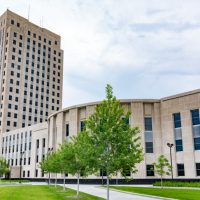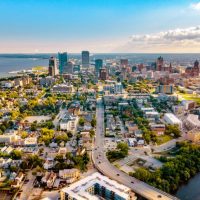The capital of Wisconsin and home to the University of Wisconsin, Madison comprises 101 square miles with a population of 263,000, making it the second-largest city in the State, behind Milwaukee.
The first Europeans arrived in the area around the 1600s.
When the Erie Canal opened in 1825, many settlers, many of whom were Scandinavian and German, could traverse the Great Lakes and come to Wisconsin.
A few years later in 1829, 1,261 acres of land were purchased for $1,500, and the City of Madison was born.
While it has a strong history, is it a good place to live?
Keep reading to learn more about the pros and cons of living in Madison!
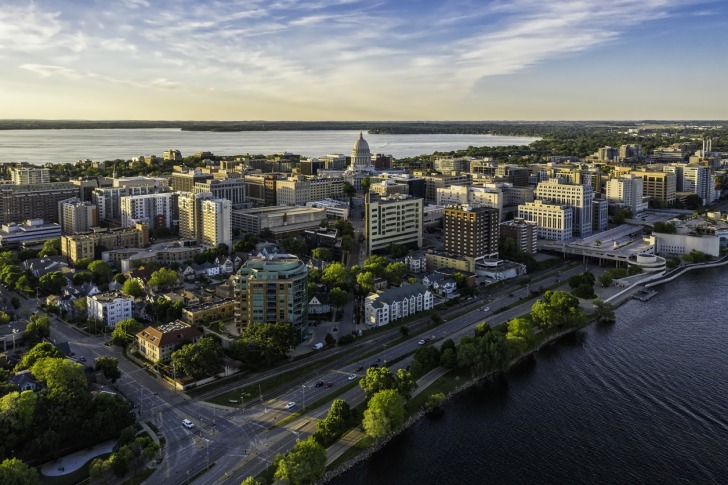
Contents
Pros of Living in Madison
This beautiful and charming city offers plenty of advantages for being a resident, including the following:
1. Excellent Schools
The State is consistently ranked in the Top 25 percent for school performance in the U.S. 77 of the districts hold an “A” rating, and 75 percent have at least a “B.”
The Madison Metropolitan School district boasts a B+ rating, and the suburbs have some of the top schools in the State, including Monona, Waunakee, and Middletown.
Furthermore, the University of Wisconsin is 12th in the U.S. for Top Public Universities in student life and academic categories.
2. Exciting Sports
The entire State is crazy about sports, with professional basketball, baseball, and football teams calling Wisconsin home.
The Green Bay Packers hold the most football championships of all teams, and NASCAR had its first race in Wisconsin in 2021.
Despite the wonderful sports following, you better be a UW football fan when living in Madison because residents take the program seriously—game days also boosted Madison’s population by around 1.8 million people.
3. Great Neighborhood Variety
The state capitol building is the city center with neighborhoods radiating out.
The city is divided into the east and west sides, and there is plenty of activity in both areas.
The east side features lower home prices and plenty of smaller and older residences.
The west side boasts more open land for construction with premium housing opportunities and newer amenities.
The most popular east-side neighborhoods include Willy Street, Tenney-Lapham, Monona, Maple Bluff, and Atwood.
The best west-side neighborhoods include Westmoreland, Vilas, Shorewood, Nakoma Central, Midvale Heights, and Dudgeon Monroe.
4. Nightlife Diversity
UW is consistently ranked as the third-best party school in the U.S., and the State is the second worst in the country for alcohol consumption, so Madison is a party town.
There are plenty of bars, restaurants, and breweries, and the State is the leading cheese producer.
While this certainly should not be a reason to move to the area, there’s a diversity of nightlife.
5. Outdoor Activities
Wisconsin boasts stunning natural forests surrounding Madison, giving residents easy access to hiking, camping, fishing, and hunting activities.
Madison has earned awards for the most parks and playgrounds per capita. Additionally, Wisconsin is fourth in the U.S. for most water, with over 11,000 square miles of liquid.
The Badger State also boasts 1,000 miles of shoreline touching the Great Lakes for excellent summer activities.
6. Plenty of Jobs
Madison’s success is directly related to the University, the city’s top employer and the largest in the State.
With over 15,000 Madison residents employed by UW, business is booming in this mid-sized city.
Leading employers include UW Hospital and other retail, insurance, and healthcare companies.
Madison is also the fastest-growing city in the State, home to healthcare, biotech, and technology startups.
7. Strong Healthcare
Wisconsin’s medical system is regularly ranked in the Top 5 in the U.S. and best among midwestern states.
The University of Wisconsin Hospital in Madison is the best in the State and 28th in the country.
Madison has excellent offerings for those looking to retire or if strong healthcare checks a specific box.
8. The Wisconsin Idea
For 120 years, Madison and the University of Wisconsin have worked together to offer progressive politics by taking passionate stances on Black Lives Matter, nuclear proliferation, the Vietnam War, segregation, and many other topics.
The Wisconsin Idea was developed in 1904, which made it the University’s mission to work with local and state government officials to improve the lives of its residents.
This resulted in a government policy think tank, which produced many U.S. firsts, including:
- Unemployment compensation program
- State income tax
- Workplace Injury Compensation law
- Statewide primary election system
Cons of Living in Madison
Although there’s plenty to love about Madison, it’s essential to understand the drawbacks of living here, including the following:
1. Average Cost of Living
The average salary in the city is $31,000, with an average household income of $54,000.
The home cost is around the national average of $257,000, with $1,100 monthly rent for a one-bedroom apartment.
Given the city’s growth, these costs have increased by 23% in the past five years.
While being at the national average isn’t terrible, many residents mention salary disappointment by local companies.
Many live on a tight budget without extra money for recreational activities and traveling.
2. Brutal Winters
Given its location, Madison’s summers are humid but cool, with temperatures hovering in the 60s and 70s and a few sweltering hot days.
This climate promotes plenty of outdoor activities on the water or in the forests.
However, this trade-off appears in winter, which is cold, snowy, and wet, with average temperatures in the 20s and 30s and lows dropping below zero.
Also, Madison receives 48 inches of snow on average, double the national average.
With over 100 square miles of lakes and land, 260,000 residents, and a Dane County population of 550,000, the overall area is not densely populated, so traffic congestion is only an issue on gameday.
However, downtown Madison was set up on an isthmus, a narrow strip of land with water on each side.
This means it can be challenging to get around, especially for those used to a grid system and numbered streets.
4. Crazy College Town
Living in a crazy college town is simultaneously a pro and con.
While the above can be amusing when living there in your early 20s, it’s not fun when you’re in your 40s and trying to transport your child to soccer practice on a gameday weekend or 60 and just want to take a nap.
Those who have never lived in a college town may wish to rent first instead of committing to purchasing a home, as it’s a unique experience.
5. High Taxes
The progressive politics found in Madison come at a price to taxpayers.
Wisconsin has the fifth highest local and State taxes in the U.S. at a whopping 13 percent, which is only behind Illinois in the U.S. Wisconsin also has the sixth highest property taxes.
While the current administration has been working to lower the tax rates in the past few years, this is slowly eating away at the pros in this article.
6. Little Public Transit
Mass transit offerings are poor and could be more efficient for a city growing this much.
While some bus lines running to central locations exist, city coverage is limited, and the buses are infrequent, making it a challenge to complete daily activities without a car.
UW is well-equipped to transport students around the college, so this won’t be an issue if you live on campus.
7. Poor Diversity
Wisconsin has poor diversity, with a demographic breakdown of 86 percent white, 6 percent black, 6 percent Hispanic, and 2 percent Asian.
75 percent of African Americans in Wisconsin live in Milwaukee, with the remaining percentage living in other smaller cities.
Madison’s demographics are relatively consistent, with the State having 74 percent white, 9 percent Asian, 7 percent black, and 7 percent Hispanic populations.
8. Wildlife
When venturing out of Madison to enjoy one of the many lakes, forests, and natural activities, you must avoid plenty of wildlife, such as bears, moose, and other large predators known to attack humans if provoked.
Wisconsin’s forests offer many benefits to outdoor enthusiasts.
Still, if you’re not used to being in the wilderness, you must travel with someone and contact the rangers’ office so they know where you are planning to be.
Hikers occasionally go missing because nobody knows they are in the forest or where they should look.
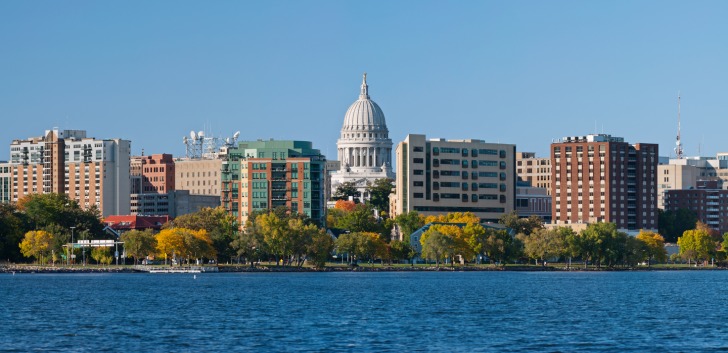
Pros and Cons of Living in Madison, WI – Summary Table
| Pros of Living in Madison | Cons of Living in Madison |
|---|---|
| 1. Excellent Schools | 1. Average Cost of Living |
| 2. Exciting Sports | 2. Brutal Winters |
| 3. Great Neighborhood Variety | 3. Can Be Challenging to Navigate |
| 4. Nightlife Diversity | 4. Crazy College Town |
| 5. Outdoor Activities | 5. High Taxes |
| 6. Plenty of Jobs | 6. Little Public Transit |
| 7. Strong Healthcare | 7. Poor Diversity |
| 8. The Wisconsin Idea | 8. Wildlife |
Madison Safety Overview
READ THE FULL REPORT: Madison Safety Review
Safety Index:
- OVERALL RISK: LOW
- TRANSPORT & TAXIS RISK: LOW
- PICKPOCKETS RISK: MEDIUM
- NATURAL DISASTERS RISK: MEDIUM
- MUGGING RISK: LOW
- TERRORISM RISK: LOW
- SCAMS RISK: LOW
- WOMEN TRAVELERS RISK: LOW
Frequently Asked Questions
What is the quality of life like in Madison?
The summer months offer an exceptional quality of life with ideal weather and students back home.
Residents enjoy plenty of nature and water activities.
Fall becomes a little more hectic as students return to the classroom, and the Saturdays become crazy due to game day.
Winter is challenging and lengthy due to the poor weather.
What is a livable salary in the city?
Individuals can get by with $15 per hour, but the living wage increases to $30 per hour for those with one child.
The state minimum wage matches the federal minimum wage at $7.25 per hour, and the State blocks the city from raising it.
Is Madison a safe city?
Most residents live daily without encountering crime.
Violent and property crimes are slightly above the U.S. average, and the city has 20 active gangs, several homeless encampments, and the most drug overdoses in the State.
However, these incidences occur in small pockets that most residents avoid.
Is Madison a boring place to live?
Madison is never dull, even in the summer when the students are out of school.
This is attributed to the extensive outdoor activities and active year-round nightlife.
Is Madison expensive?
Home and rent costs are around the national average, and most other daily expenses follow national trends.
